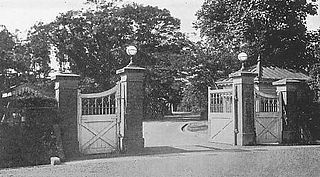Loading AI tools
Japanese educational institution in Tokyo From Wikipedia, the free encyclopedia
The Gakushūin (学習院), or Gakushuin School Corporation (学校法人学習院), historically known as the Peers' School,[1] is a Japanese educational institution in Tokyo, originally established as Gakushūjo (学習所) to educate the children of Japan's nobility.[2] The original school expanded from its original mandate of educating the social elite and has since become a network of institutions which encompasses preschool through tertiary-level education.


The Peers' School was founded in 1847 by Emperor Ninkō in Kyoto and placed under the administration of the Imperial Household Agency.[3] Its purpose was to educate the children of the Imperial aristocracy (kuge).[4] Prior to the disestablishment of the Peerage in 1947, commoners had restricted access to Gakushuin, with limited slots only to the Elementary School and Middle School.
In 1947, with the American-mandated disestablishment of the peerage system, enrollment in Gakushuin was fully opened to the general public. At the same time, administration of the school was transferred to the Ministry of Education.
Emperor Ninko had four maxims inscribed on the walls of the Gakushūin building,[5] including
The school was moved to Tokyo in 1877.[2] Its new purpose was to educate the children of the modern aristocracy. Members of the Imperial Family continue to study at Gakushūin.
The present-day Gakushuin School Corporation comprises the following institutions:[6]
| No. | Name | Year | Title | Military rank | Note |
|---|---|---|---|---|---|
| 1 | Tachibana Taneyuki | 1877–1884 | Viscount | – | Last Daimyō of Miike Domain. |
| 2 | Tani Tateki | 1884–1885 | Viscount | Lieutenant General (IJA) | Former president of Imperial Japanese Army Academy |
| 3 | Ōtori Keisuke | 1885–1887 | Baron | – | Member of Privy council. |
| 4 | Miura Gorō | 1887–1891 | Viscount | Lieutenant General (IJA) | |
| 5 | Iwakura Tomosada | 1891 | Prince | – | |
| 6 | Tanaka Mitsuaki | 1891–1894 | Viscount | Major General (IJA) | |
| 7 | Konoe Atsumaro | 1894–1903 | Prince | – | The heir of Konoe family. The president of House of Peers (1892–1905) |
| 8 | Kikuchi Dairoku | 1903–1904 | Baron | – | Mathematician and Minister of Education (1901–1903). |
| 9 | Yamaguchi Einosuke | 1905–1906 | – | – | Physicist. |
| 10 | Nogi Maresuke | 1906–1912 | Count | General (IJA) | Emperor Showa entered school in 1908 and graduated in 1914. |
| 11 | Ōsako Naoharu | 1912–1917 | Viscount | General (IJA) | |
| 12 | Hōjō Tokiyuki | 1917–1920 | – | – | Mathematician. Former president of Tohoku Imperial University (1913–1917). |
| 13 | Ichinohe Hyoe | 1920–1922 | – | General (IJA) | The Inspectorate General of Military Training |
| 14 | Fukuhara Ryojirō | 1922–1929 | – | – | Former president of Tohoku Imperial University (1917–1919) |
| 15 | Araki Torasaburō | 1929–1937 | – | – | Medical scientist. Former president of Kyoto Imperial University (1915–1929) |
| 16 | Nomura Kichisaburō | 1937–1939 | – | Admiral (IJN) | |
| 17 | Yamanashi Katsunoshin | 1939–1946 | – | Admiral (IJN) |
In the novel Spring Snow by Yukio Mishima, set in the early 1910s, the characters Kiyoaki Matsugae and Shigekuni Honda attend the school.
Seamless Wikipedia browsing. On steroids.
Every time you click a link to Wikipedia, Wiktionary or Wikiquote in your browser's search results, it will show the modern Wikiwand interface.
Wikiwand extension is a five stars, simple, with minimum permission required to keep your browsing private, safe and transparent.